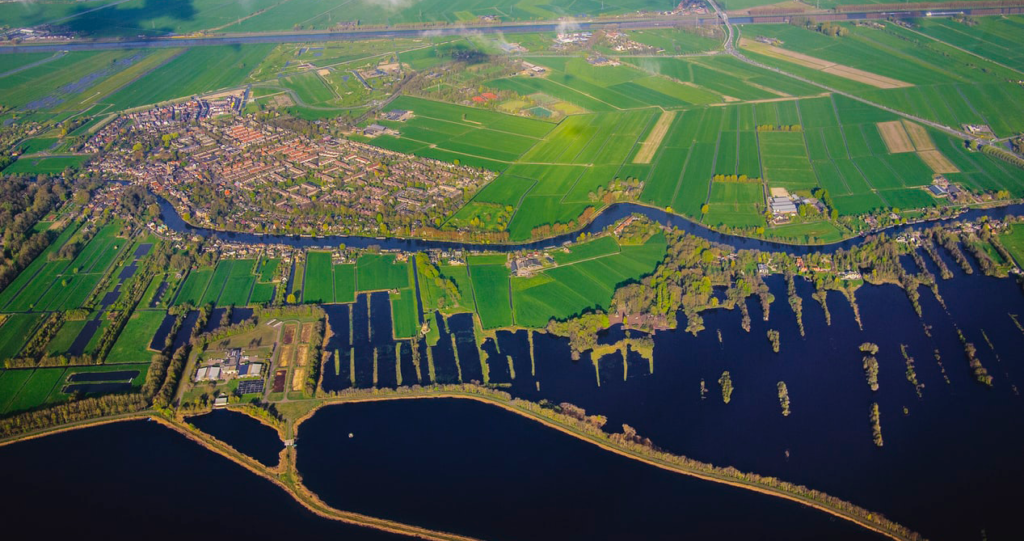Is it a coincidence that in the last two decades we’ve had 18 of the hottest years since records began? It doesn’t look like it.
Nor was it coincidental that in 2017, for the first time in history, a powerful hurricane arrived in Ireland from the Eastern Atlantic or that in 2018 storm Leslie caused destruction in Spain and Portugal; that Europe has suffered extreme heatwaves in four of the last five years; or that severe droughts have ravaged many parts of Europe, while severe flooding has caused destruction in Central and Eastern Europe.
Because all these warnings from the planet are not accidental, the European Commission decided to act—by the end of 2018 it presented a long-term strategic vision for the development of a modern, competitive and climate-neutral economy by 2050.
In doing so, it confirmed the European commitment to leading global climate action and presented a strategic vision with a clear objective: to achieve, within 30 years, an energy system with zero net greenhouse gas emissions, by means of a socially just transition implemented cost-effectively.
Climate change is a major problem. The effects of climate change, which is reshaping the world and magnifying the risks of instability in all its forms, are very evident.

The EU decided to present a plan aimed at leading the way towards climate neutrality through:
All while ensuring social justice for a just transition.
“If climate change is not stopped, the Earth may become a ‘greenhouse’, and the likelihood of large-scale irreversible climate consequences may increase,” says the IPCC report drafted by the European Commission.
This European plan for a climate-neutral future covers virtually all EU policies and is in line with the objective of the Paris Agreement to keep the temperature increase well below 2°C and continue with efforts to keep it at 1.5°C.
According to the IPCC report, “limiting the increase in the global temperature to 1.5°C is feasible, provided that we act now and consistently use all the tools at our disposal”.
According to the European Commission’s study, the path towards a zero net greenhouse gas emissions economy “could be based on joint action around a set of seven strategic priorities”:
Energy efficiency measures should help to reduce energy consumption by 50% compared to 2005. The decarbonisation of industrial processes plays an important role in this area. However, the main reduction in energy demand should occur in buildings (residential or services), which today account for 40% of energy consumption.
The transition to clean energy would lead to an energy system whose energy would primarily come from renewable energy sources, which would significantly improve security of supply and promote national employment.
In addition, the chemical industry has long used hydrogen as a raw material in industrial processes. Its role is likely to be more prominent in a totally decarbonised energy system. Hydrogen can contribute to the decarbonisation of several sectors. For example, as a raw material for industry.
Transport is responsible for about a quarter of greenhouse gas emissions in the European Union. So all means of transport must contribute to decarbonising the mobility system.
A combination of decarbonised, decentralised and digitalised energy, more efficient and sustainable batteries, high-efficiency electric trains, connectivity and driverless vehicles offers possibilities for the decarbonisation of road transport.
The EU knows, however, that “electrification with renewable energy alone will not be a panacea for all means of transport” and, therefore, it advocates rail as the most energy-efficient solution for medium and long-distance freight transport.
Although European industry is already among the most efficient in the world, it will have to work to remain so. Accordingly, it will develop a competitive and circular economy that uses resources efficiently. Additionally, the elimination of greenhouse gas emissions will often require major upgrades to or complete replacement of existing installations. This investment will be part of the next industrial revolution.
A zero-net greenhouse gas economy can only be achieved if there is adequate, smart infrastructure to ensure optimal interconnection and sectoral integration throughout Europe. Increased cross-border and regional cooperation will make it possible to reap the full benefits of the modernisation and transformation of Europe’s economy.
By 2050, the world population will have grown 30% from current levels. And we will have a changing climate that affects ecosystems and land use worldwide. EU agriculture and forestry will therefore have to provide sufficient food, animal feeds and fibre, as well as support for the energy sector and various industrial and construction sectors. These are all fundamental aspects of Europe’s economy and way of life.
The deployment of carbon capture and storage remains necessary, especially in energy-intensive industries and, in the transition phase, for the production of carbon-free hydrogen. A plant built today, for example, is likely to remain operational in 2050, so the ability to deploy carbon removal technologies enhances the credibility of the EU’s long-term strategy.
The EU recognises that all economic sectors will have a role to play in the transition to climate neutrality.
Most of our energy system, which accounts for more than 75% of EU greenhouse gas emissions, is based on fossil fuels. This situation will have to change and energy companies will have to move towards decarbonisation. For example, by 2050, more than 80% of EU electricity will be produced from renewable sources.
Industry will also be affected. The European authorities call on industry to “make significant innovation efforts over the next 10 years to implement the economically competitive technologies needed to contribute to a circular, low-carbon industrial transformation”.
In terms of mobility, today’s transport sector is heavily reliant on fossil fuels. Rethinking mobility will bring tangible benefits, including clean air, less noise and more liveable urban spaces, creating significant benefits for the health and quality of life of citizens and the European economy.

The agricultural sectors will also contribute. According to the European Union, “emissions from agriculture can be reduced through a range of practices and technologies, such as better management of livestock, fertilisers and manure”.
And finally, this high level energy development towards decarbonisation also affects the construction sector. Residential and service sectors buildings together account for 40% of final energy consumption in the EU. Implementing the use of more efficient products and appliances, efficiency systems in ‘smart’ buildings and consumer behaviour will help to further mitigate energy demand.